How to feeding your Labrador puppy and how to compose the diet to have a beautiful and healthy dog? Before you start caring for or training a dog, you must know what to feed any puppy, particularly Labrador.
The baby will spend his first 1.5-2 months after his mother, and only then will you be able to cuddle a warm, soft lump. But along with him, a puppy bowl will also appear in your home.
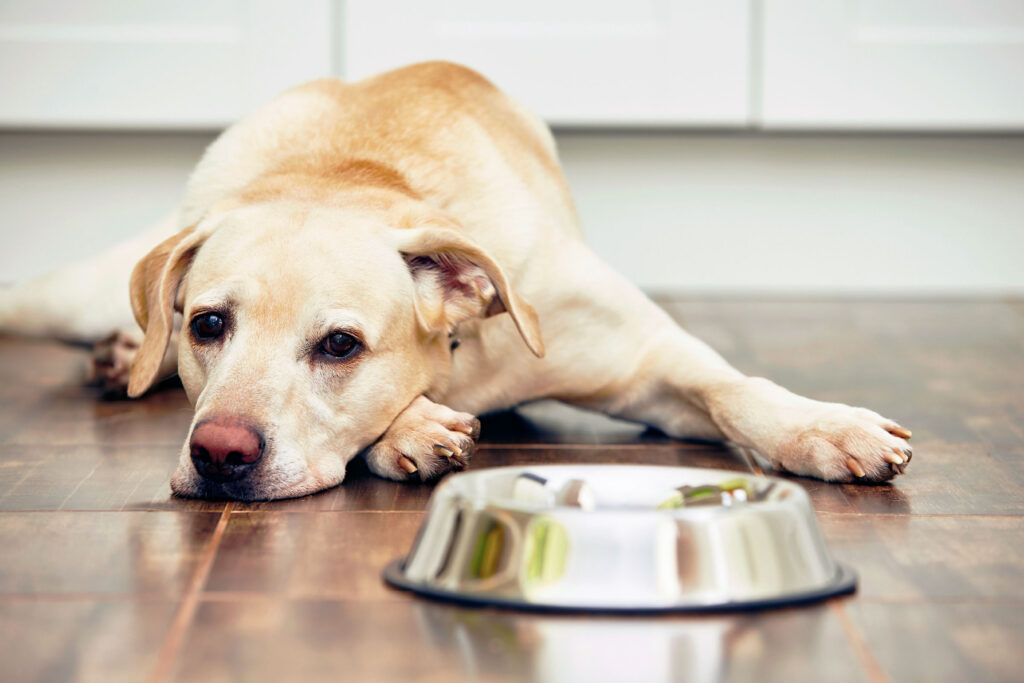
At first, this container will become an unidentified Universe for you. Where to put it? What size? What material? And the most important thing is what to put in it?! We’re going to be disappointed, but there are no particular difficulties. There is a specific order of introducing new food components and some clarifications. The prominent landmark is the puppy’s periodic manifestation of hunger. How can you tell if your baby is hungry? When a dog is starved, it comes running to its owner and pokes its nose, then runs to the bowl, indicating why it was that it came running to you. Also, the puppy may begin to rattle the empty bowl, whining simultaneously. You will immediately hear a satisfied slurping sound after decoding his call signs. This is how a healthy dog ”behaves, so let’s understand the correct way of eating.
Feeding a Labrador puppy at one month
Since the puppy spends the first two months of its life next to its mother, the breeder has plenty of time to determine what food to feed the Labrador. The baby’s first food is milk since, firstly, a dog that has just given birth has plenty of it. Secondly, in the dairy environment, there is a large (or rather, huge) amount of acidic bacteria that will suppress the active development in the stomach, just a fluff of putrefactive bacteria that was born.
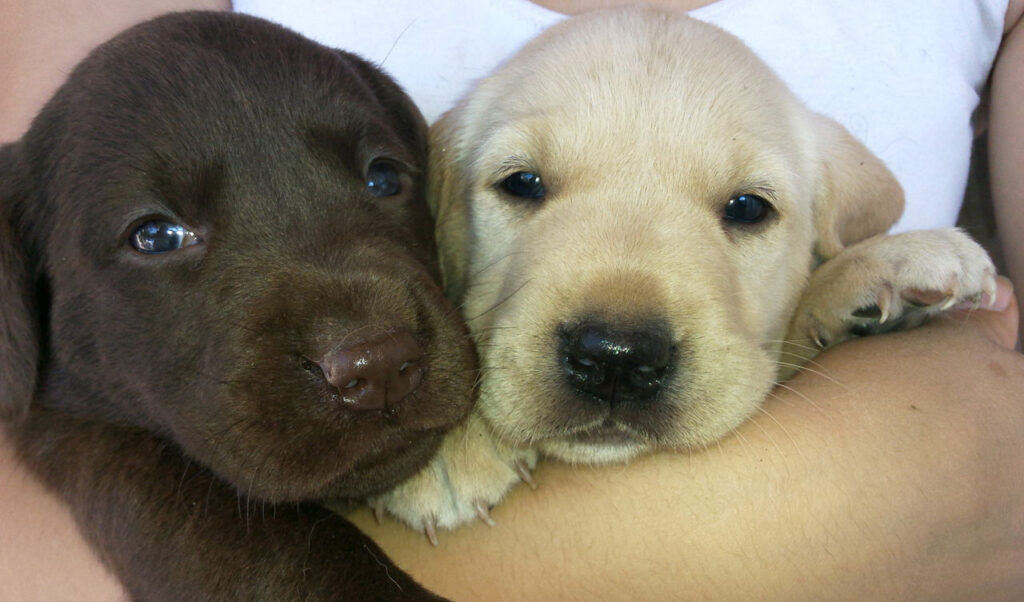
A small dog’s immunity is not yet strong, so it needs constant support, and in this case, lactic acid bacteria are a real salvation. But they still understand perfectly well that mother and puppy will separate one day.
For the separation to go well, complementary foods in the form of fermented milk products are gradually introduced into the Labrador puppy’s diet because:
- The fermented milk protein in cottage cheese, kefir, and yogurt will be wholly absorbed without burdening the tiny stomach.
- This food is rich in protein (even low-fat cottage cheese contains 17%). These organic substances are nothing more than a building material for any tissue. By consuming enough protein, the baby will soon become vital.
- The amino acids in the composition will protect the internal organs, designated genetically as weak points of the breed. Methionine will protect the kidneys, and lecithin will help the liver form new healthy cells. Choline, part of the nerve fibers, helps create a healthy nervous system.
When feeding, pay attention to portions for one-month-old Labrador puppies. The main principle of their formation is that the stomach is still tiny, and the animal’s growth is speedy. Therefore, there is only a little food in the bowl, but it is high in calories.
How to feed a two-month-old Labrador puppy
Now is the time if you have not yet introduced meat into your Labrador puppy’s diet. At first, this familiar dog food appears in the bowl as complementary, meaning there shouldn’t be much of it there. Why does your pet need it?
For example, dairy food is supplied most organically to the puppy’s stomach – with the mother’s milk. No one disputes these feedings because arguing with nature is stupid. But meat in the wild is also an equally harmonious component of animal nutrition. Besides, it’s valuable because its fibers, in addition to protein, also contain minerals.

A dog can only have solid bones and teeth with proper calcium and phosphorus levels. The iron-containing protein hemoglobin (from meat) is a transporter of oxygen, which delivers it to all animal body tissues. There is plenty of this protein here.
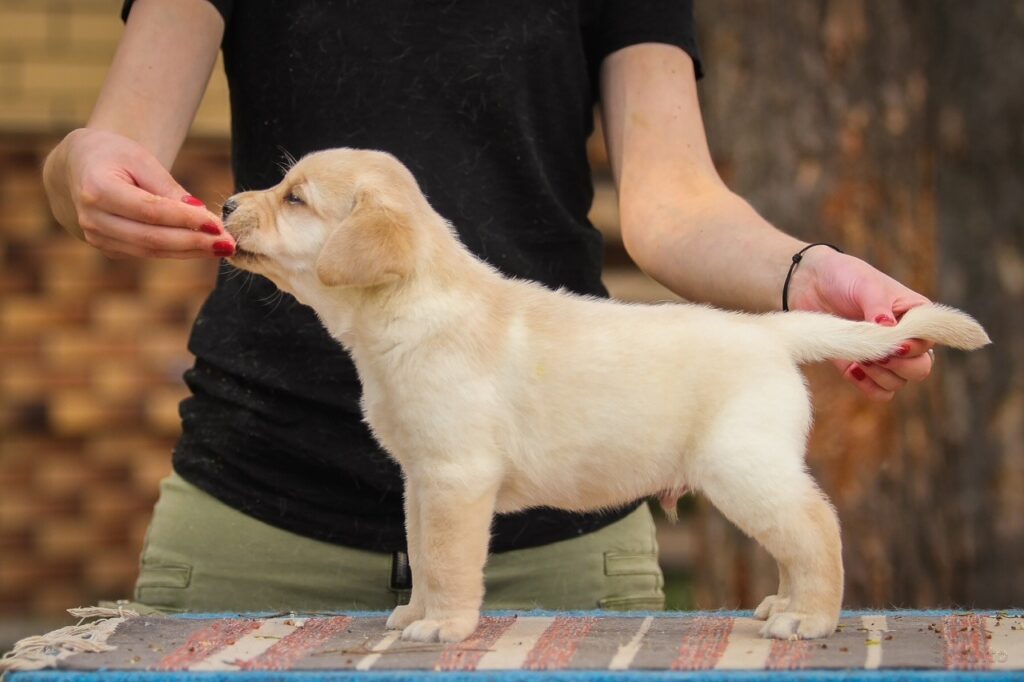
But there is a slight nuance – raw meat contains much more protein. So the Labradors feed meat, scraping off the fibers from a large piece with a sharp knife. Could you be sure to give the new treat a good sniff? The puppy’s olfactory behavior is still based on its parent’s food preferences, so the smell of the new product must be familiar to it. When a dog chews food, its breathing spontaneously becomes delayed, and its sense of smell becomes dull. At this time, the taste and volume of the dish come first.
Then, the owners slowly expanded:
- size of meat pieces. From scraped half a teaspoon to 1 cm pieces.
- variety of varieties. From beef, lamb, and rabbit to poultry. Chicken producers often use antibiotics in breeding, so you can protect yourself from accidentally introducing a dangerous substance into the diet by using this order.
- types of processing. Raw meat is introduced first, then boiled until half cooked, and boiled last. Moreover, it is also acceptable to eat it raw, but it is subject to freezing for over three days.
What else should I feed a 2-month-old Labrador puppy? The milk stage does not go anywhere. He still prevails.
How to feed a three-month-old Labrador puppy
A three-month-old puppy is going through an essential digestive stage in its life – it is changing its milk teeth to permanent ones. And when teething comes through, you will be looking for an answer to what to feed your Labrador puppy. A healthy jaw cavity will be the key to preventing digestive diseases.

At this time, a sugar bone appears in the puppy’s life. The very symbol of a happy dog’s life! The point is not that the dog gets true pleasure from the process but that the animal strengthens its teeth by gnawing it. Strong fangs will always be able to chew food well!
Feeding your Labrador puppy at three months is still frequent, with small portions affluent in nutrients. So, a puppy can celebrate another month of life with a bowl of fermented milk products, a portion of meat, or licking a sugar bone.
Feeding a Labrador puppy at four months
At the 4th month of life, it is rational to introduce fiber into the dog’s food. Vegetables are rich in it. It is a fiber that cleanses the intestines well, gives a feeling of fullness, and prevents obesity. However, it would be helpful to learn how to feed a Labrador puppy with it appropriately:
- vegetables are boiled or lightly boiled;
- thoroughly crushed;
- their quantity constitutes no more than a third of the daily diet.
For example, carrots can help prevent eye diseases. For a puppy, this is a vitamin bomb containing carotene, folic acid, and potassium. Clean skin and mucous membranes and the correct balance of metabolic processes result from including vegetables in the diet. One usefulness! But dogs are often indifferent to vegetables. Therefore, various vegetable oils are added to them for additional smell and taste.
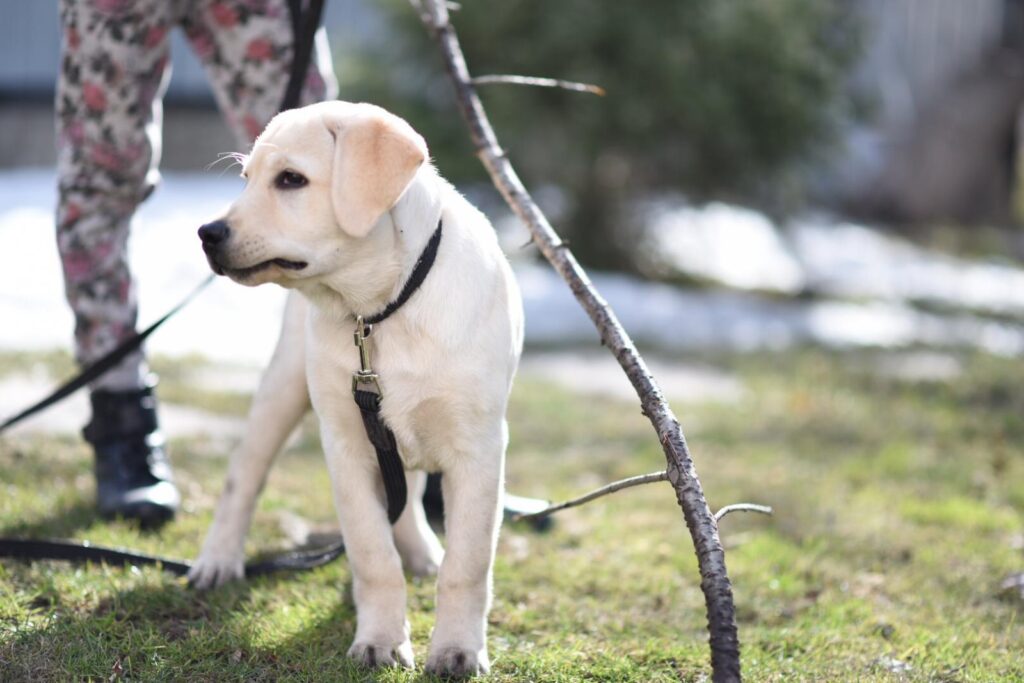
Remember:
- Potatoes are not included in the acceptable vegetable list – they are poisonous to animals;
- Cucumbers and cabbage cannot be mono-vegetables – mix them with others;
- Just one clove of garlic every week will provide many benefits.
Feeding a Labrador puppy at six months and beyond
A six-month-old puppy is very playful, so he needs to get energy from somewhere. The most accessible source of it is cereal porridge. They, like vegetables, are rich in fiber but of a slightly different kind – long-digesting. Here, you have satiety, vitamin B intake, and mineral supplements.
However, it would be best if you also were careful with cereals:
- semolina, pearl barley, and oatmeal are rare foods;
- mandatory serving with meat;
- the amount in the diet should not exceed 30%.
Another thing is wheat and rye bran! They are safely added to fermented milk foods and vegetables. Food enriched with them is satisfying and rich in beneficial bacteria that help maintain healthy intestinal microflora.
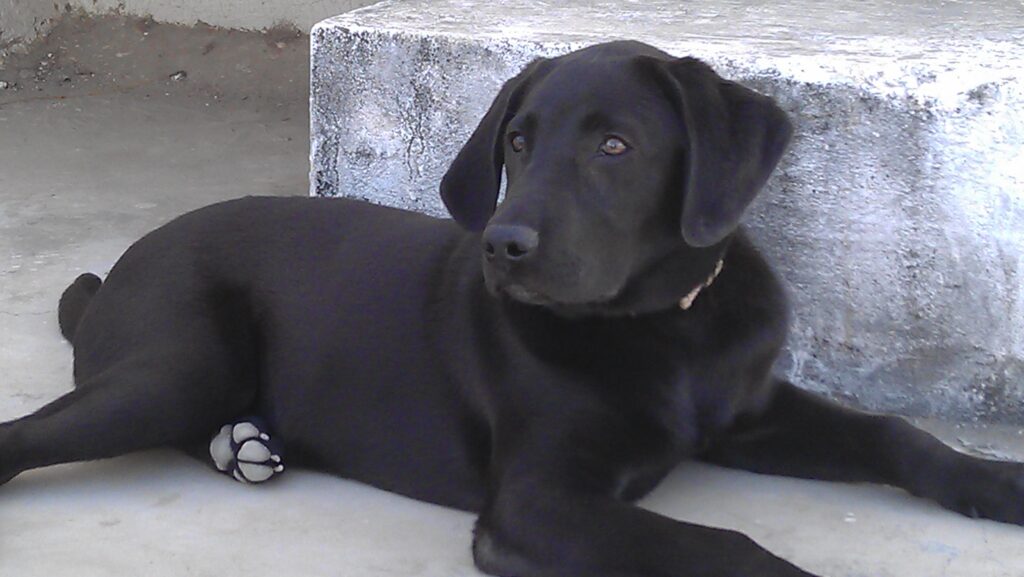
To calculate the feeding rate for a Labrador puppy, you need to know two simple formulas: up to 6 months – multiply the puppy’s weight by a factor of 0.07 and after six months by 0.03. The resulting values ”constitute the total amount of food. It is divided proportionally into:
- fermented milk component – 50%;
- meat – 50%;
- plant foods provide 20% of the meat weight.
At this age, puppies eat eggs, berries, fruits, offal, boneless fish, greens, and nuts. These products only appear in the bowl occasionally, and the portions are very similar. However, their absence negatively affects the functioning of the hormonal glands and internal organs, the skin and limbs, and the dog’s mood.
How many times a day should you feed a Labrador puppy?
We have figured out the daily food intake but haven’t figured out how many times to feed a Labrador puppy. We dare to warn you that the Internet usually gives general recommendations. Your puppy is an individual not only in character but also in food preferences. Don’t expect strict instructions from us because any baby can eat 5 to 3 times at a certain age.
His appetite is determined by:
- climate (in a cold climate zone, it is necessary to warm up intensely, which means eating more often);
- place of detention (an apartment resident sleeps more than an enclosure resident);
- physical activity (the restless “tail” will poke its nose into its bowl more often).
There is only one way out—focus on average parameters, and no one has canceled the individual approach. The puppy leaves food in the bowl but is cheerful, which means reducing the frequency of feedings—but only during the day because there are no night feedings for your pet.

The science of feeding Labrador puppies by month is fine. Small and helpless, he eats little often, but as he grows up, he wants variety. Such changes are the loving glance of the owner, and dog breeds will notice instantly. He will also offer you a snack:
- at the same time,
- food at room temperature;
- from a bowl with a height-adjustable stand;
- unsalted food.
Your four-legged friend will accept your busyness and take dry food calmly. But he will always need plenty of fluids, and in the first year of life, he will also need to rest after feeding for at least an hour.
Video: feeding a Labrador puppy




